MaDePro 2012
The Swiss Federal Institute of Technology of Lausanne (Ecole Polytechnique
Federal de Lausanne - EPFL) organized a Certificate of Advanced Studies in
Management of Development Projects (MaDePro) in 2011-2012, for which I was
one of the faculty. After several months of distance learning, including my
2-week module on sustainable development, the 26 participants from around
the world experienced a two-week immersion in the realities of development
in India from 26 February to 9 March 2012, for which I was one of two
accompanying faculty. Our local collaborating institution was the Indian
Instutute of Science (Tata Institute) in Bangalore, where some lectures and
practical exercises were organized, but the highlight was a week in the
small village of Chennakeshava Pura (C.K. Pura) near Pavagada in Karnataka
State about 170 km (4 hours) northwest of Bangalore. Our host in the
village, Sheshagiri Rao, is a scientist who returned to his village to try
to solve the problems this semi-arid region faces with climate change and a
declining groundnut (peanut) cash crop economy. This was the same village I
had visited with a previous EPFL course two years ago (see photos).
For
photos of the Hindu temple we visited on the way, and views of the
countryside and rural life in this part of India, see my separate travel
page.
The first two days at the Indian Institute of Science in Bangalore included
lectures on village life and exercises in inter-cultural communications.
They were also an opportunity for the participants to get to know each other
after communicating for several months only at a distance. Participants had
come from as far as the Philippines, Papua New Guinea, Ethiopia, Kenya,
Honduras, Mexico, as well as Europe and south Asia.
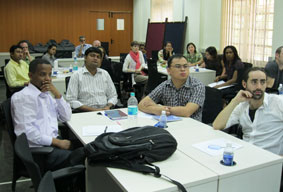 .
. 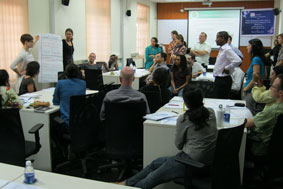 .
. 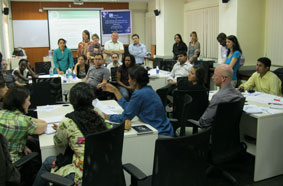
After an initial lecture, different working groups presented their
results
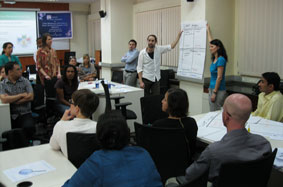 .
. 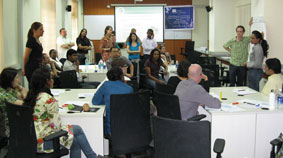 .
. 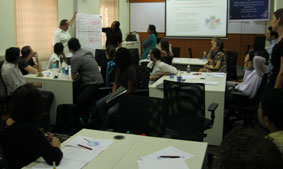
After a four-hour trip over increasingly poor roads in an Indian bus
of uncertain age, and a stop to visit the Lepakshi Temple, the group arrived
in C.K. Pura and an initial introduction to village life.
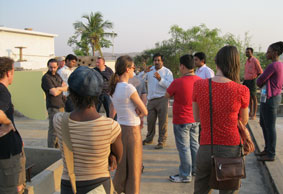 .
. 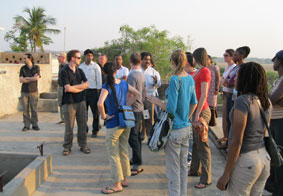 .
. 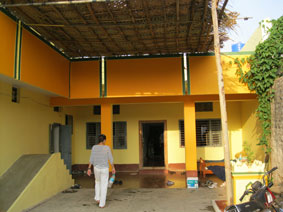
A first view of the village, and the entrance to Dr. Rao's house,
newly painted for our visit
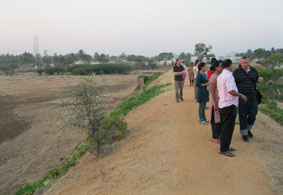 .
. 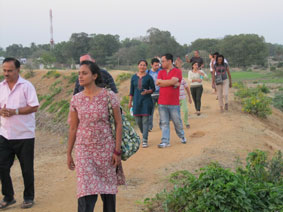
A walk along the bund of the tank (rainwater reservoir) adjacent to
the village
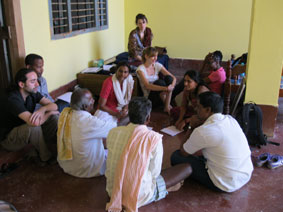 .
. 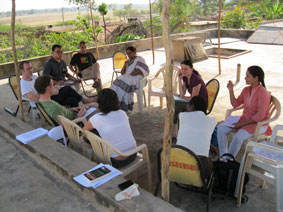
There were meetings with local villagers, and government officials
from the nearby town to understand local problems
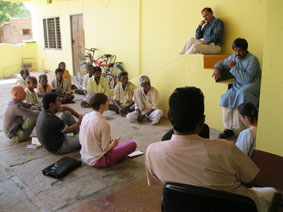 .
. 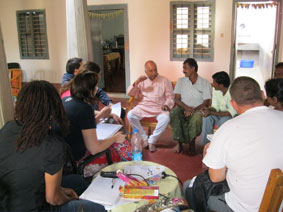
There were two weddings in the village while we were there, and one couple
came to pay their respects to Dr. Rao.
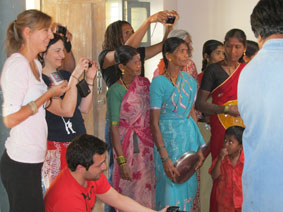 .
. 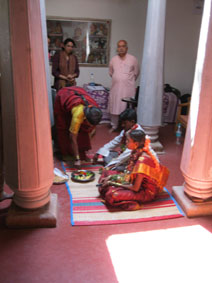 .
. 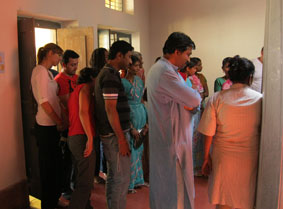
Visit of the newlyweds
Early one morning, much of the group went for a hike up one of the rocky
hills that dot the landscape
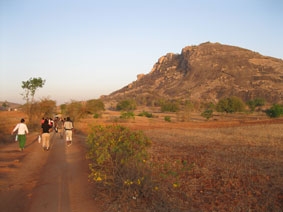 .
. 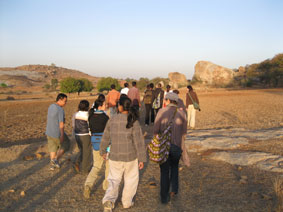 .
. 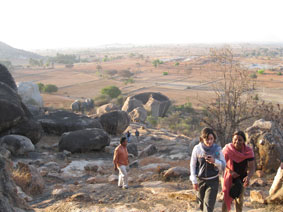
Setting off towards the hill in the distance
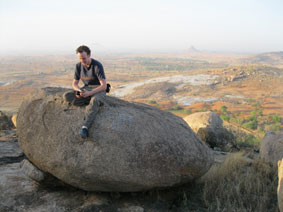 .
. 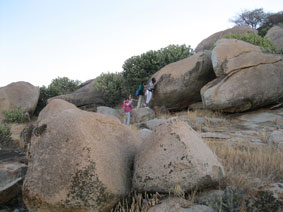 .
. 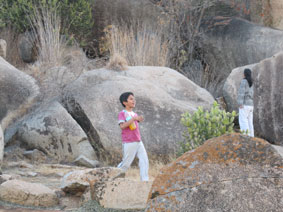
On the way up. Dr. Rao's son was one of the most energetic hikers.
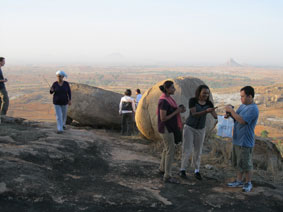 .
. 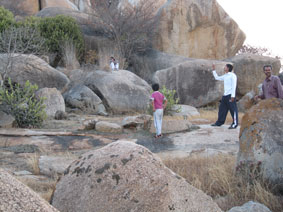 .
. 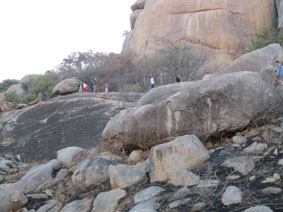
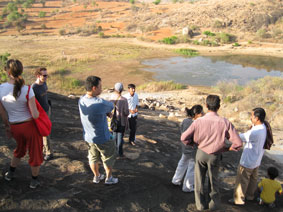 .
. 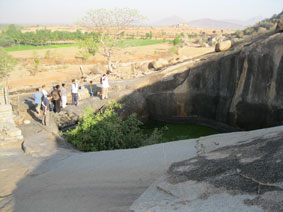 .
. 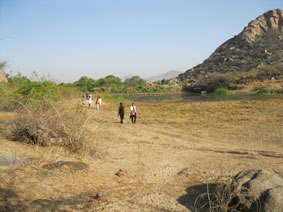
We descended by another route
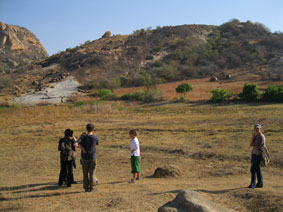 .
. 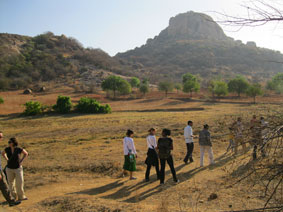 .
. 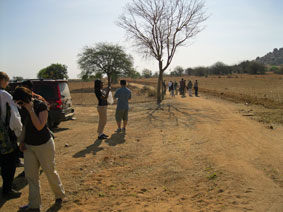
Some participants decided to walk all the way back to the village
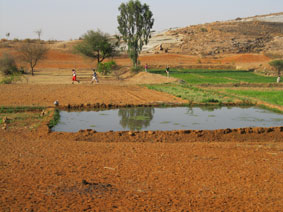 .
.
A small farm with some irrigated fields
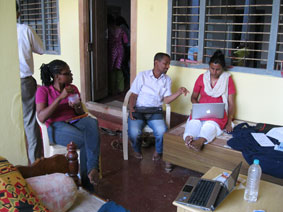 .
. 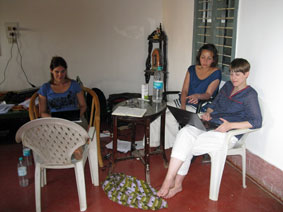 .
. 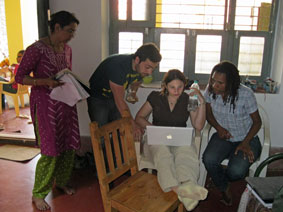
The groups worked hard on their project proposals
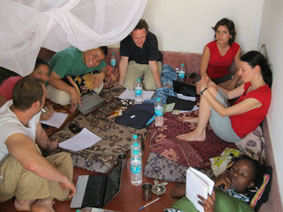 .
. 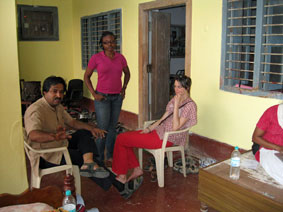
One evening two village drummers came, and had most of the group dancing in
the courtyard
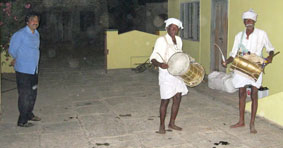 .
. 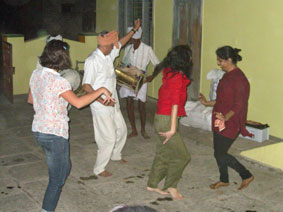 .
. 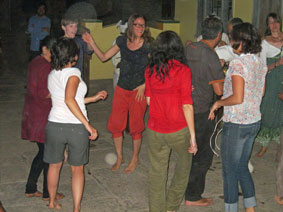
Dr. Rao and the drummers
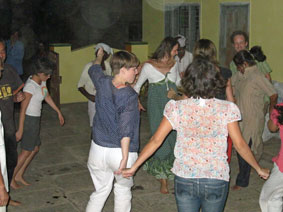 .
. 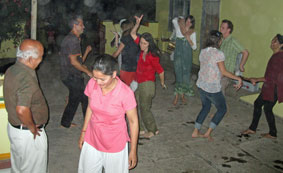 .
. 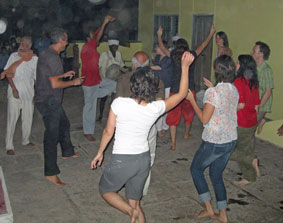
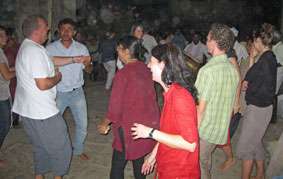 .
. 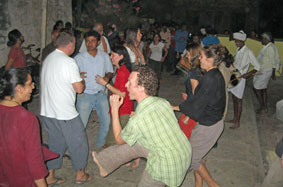 .
. 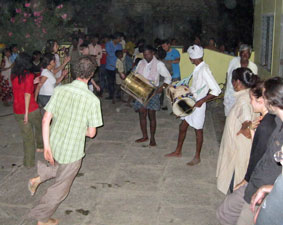
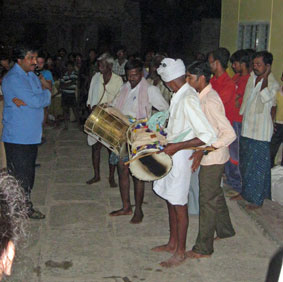 .
. 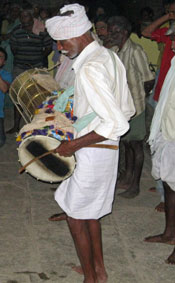 .
. 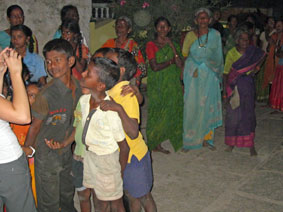
A crowd of villagers came to watch the visitors that had fun just
like they did
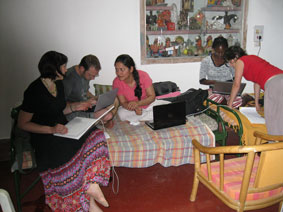 .
. 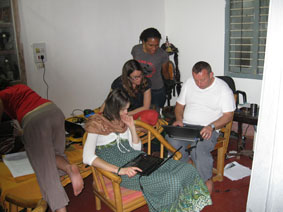 .
. 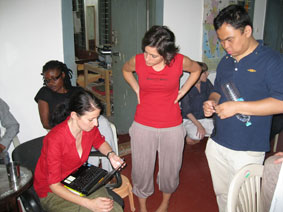
The groups were so deeply into their projects that it was hard to get
them to stop
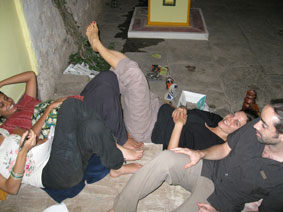 .
. 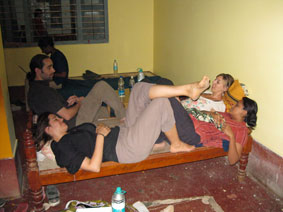 .
. 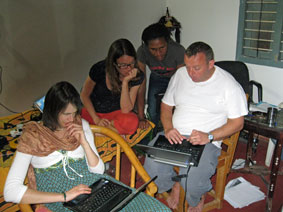
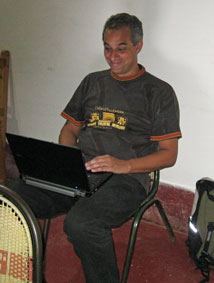 .
. 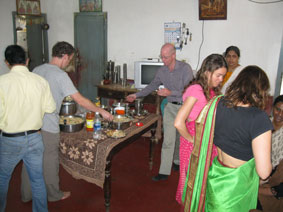
Yuri Changkakoti, the course coordinator from EPFL, and a tea break
All the female participants were taught how to wear beautiful saris
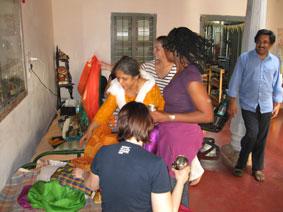 .
. 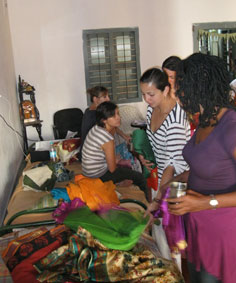 .
. 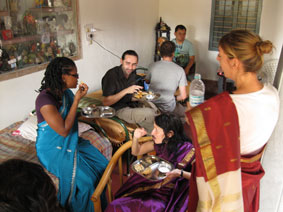
Selecting the most appropriate sari with the help of Mrs. Rao
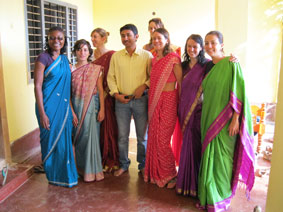 .
. 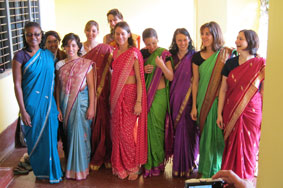 .
. 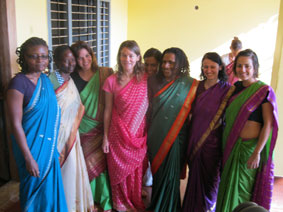
The full immersion in village life was exactly that
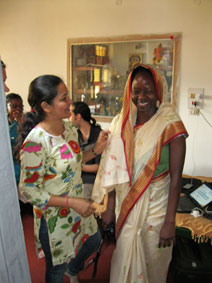 .
. 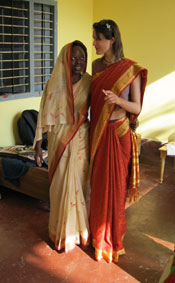 .
. 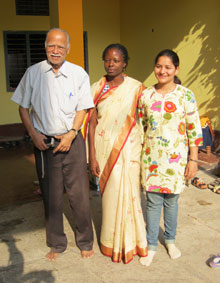 .
. 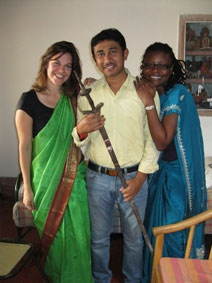
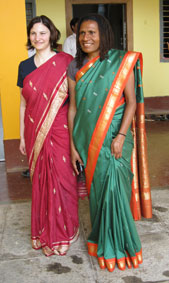 .
. 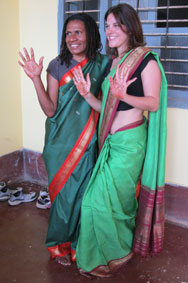 .
. 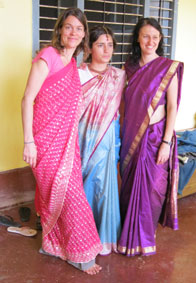 .
. 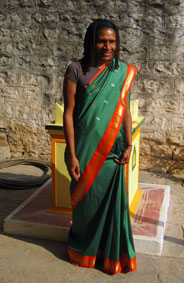
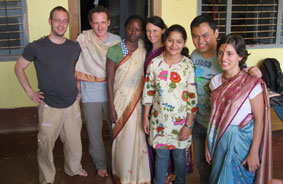 .
. 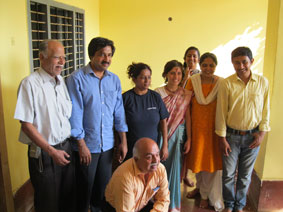 .
. 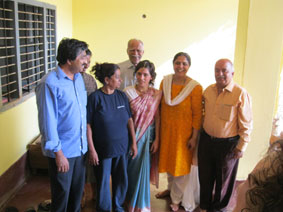
Sheshagiri Rao and his extended family (wife and children, sisters,
brother-in-law, father-in-law) all hosted us beautifully
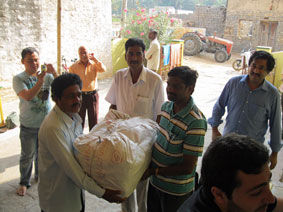 .
. 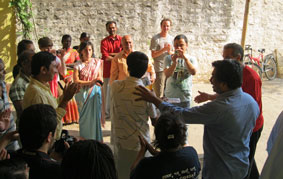 .
. 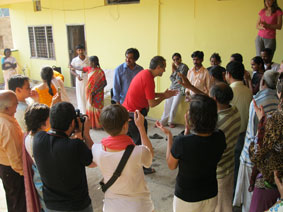
The participants made a gift of sports equipment to the local school,
and gifts of thanks were presented to all of the household staff
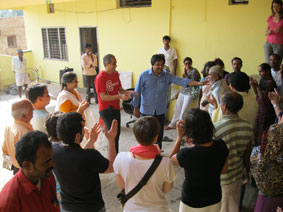 .
. 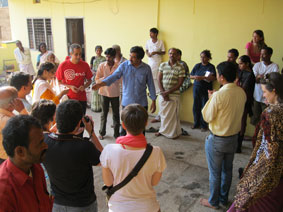 .
.
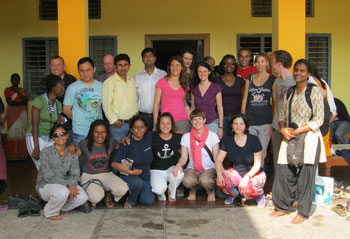 .
. 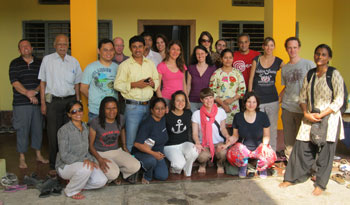
The group photograph
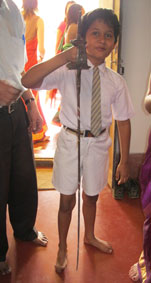 .
. 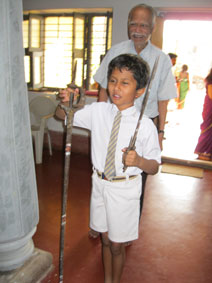
Vikram Rao, with his grandfather, showing off his ancestors swords
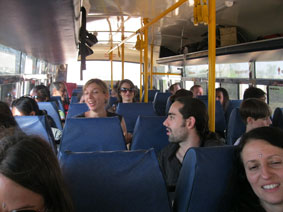
We took the bus back to Bangalore with regrets on leaving the village
where we had been received so well
On our return to Bangalore, each project team presented their results
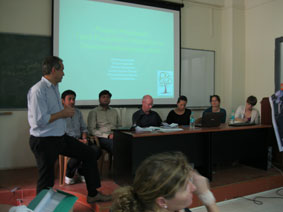 .
. 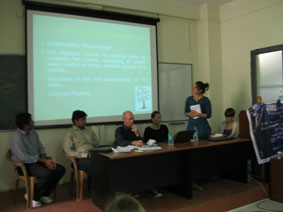 .
. 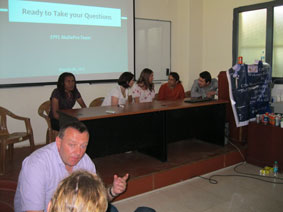
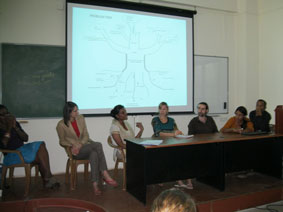 .
. 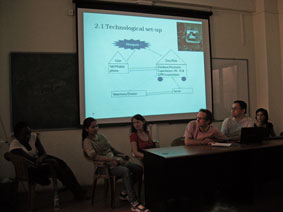
 .
.  .
.  .
. 
 .
.  .
. 
 .
.  .
. 
 .
. 
 .
. 
 .
. 
 .
.  .
. 
 .
.  .
. 
 .
.  .
. 
 .
.  .
. 
 .
.  .
. 
 .
.  .
. 
 .
.  .
.  .
. 
 .
. 
 .
.  .
. 
 .
.  .
. 
 .
.  .
. 
 .
.  .
. 
 .
.  .
. 
 .
.  .
. 
 .
. 
 .
.  .
. 
 .
.  .
. 
 .
.  .
.  .
. 
 .
.  .
.  .
. 
 .
.  .
. 
 .
.  .
. 
 .
.  .
.  .
. 
 .
. 

 .
.  .
. 
 .
. 